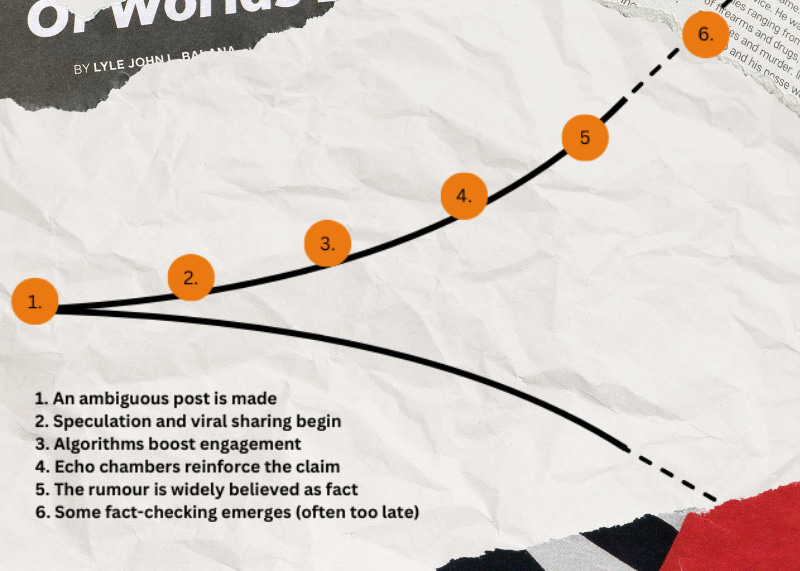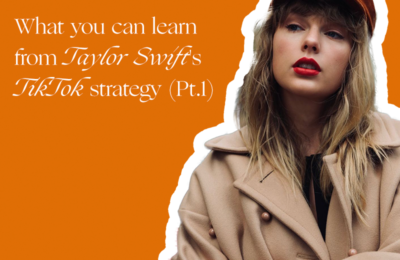Inside the rapid spread of a celebrity ‘feud’ and what it can show you about shaping opinions
With the world news going on, developments across social media fact-checking – I asked myself: what can I do? What insight can I provide based on my job as a social strategist and my knowledge of pop culture??
My answer was to write this series. Do subscribe below to keep in the loop for the next parts.
Thanks for reading F/ROCK + SC:ROLL! Subscribe for free to receive new posts and support my work.Subscribed
Social media shapes opinions every day, often in ways we don’t even realise. Whether it’s a trending celebrity rumour or a political narrative gaining traction, the mechanics are the same – amplification, social proof, and algorithmic reinforcement. And if you’ve ever found yourself convinced of something just because you’ve seen it everywhere, you’ve experienced this firsthand.
That’s what this series is about: breaking down how opinions are shaped online and what to look out for.
The first piece dives into a familiar starting point – celebrity gossip. Why? Because you already know the story. And that makes it the perfect way to examine how misinformation spreads, why we get pulled in, and what that means for the bigger picture.
Why start with a celebrity Example? Because You Already Know the Story…

Pop culture dramas involving figures like Selena Gomez or Hailey Bieber grab attention fast. Some people follow these stories as devoted fans, others watch trends for marketing or analysis. And, reader, so do I. These moments dominate social feeds, spark debates, and spread like wildfire – making them the perfect case study for how misinformation takes hold.
Viral celebrity stories demonstrate just how quickly false or misleading claims can gain traction. Enthusiasts share posts they assume are accurate, while social media algorithms boost sensational or emotionally charged content, often without fact-checking.
At first glance, a celebrity rumour might seem trivial. But the same forces that turbocharge a Selena vs. Hailey ‘feud’ are at play in far more serious areas – from political campaigns to corporate PR and astroturfing tactics. These stories offer a low-stakes way to understand high-impact manipulation.
There is also an additional layer to it, pop culture gossip and memes have become part of the alt-right pipeline, so conversations that we may not immediately realise of being right-wing coded, or are brutalising our communication (I’ve linked an interesting article about this in the references at the end of this article!)
A Glimpse into the Misinformation Machine
From Rumour to ‘Fact’ in Record Time
A single ambiguous post can ignite an online frenzy. In the Selena–Hailey example, fans spotted what they believed were subtle digs, and speculation took off. Within hours, TikTok deep dives, trending hashtags, and memes flooded feeds. For many, the sheer volume of discussion created a false sense of credibility – if everyone’s talking about it, it must be real.
If you work in marketing, this should feel familiar. Social proof – the idea that we trust what we see others engaging with – plays a huge role here. More comments, more videos, more people repeating a claim can create the illusion of truth.
How You Get Pulled In
Even if you don’t follow celebrity gossip, you’re not immune. Social media platforms prioritise high-engagement content, whether it’s outrage, curiosity, or moral panic. Watch one video, even out of mild curiosity, and suddenly, the algorithm decides you want more. Before long, your FYP is reinforcing a single narrative, narrowing your view of what’s actually happening.
Why These Myths Stick Around
The illusory truth effect – the more you hear something, the more familiar it feels, and the more likely you are to believe it – plays a huge role here (Hasher, Goldstein, & Toppino, 1977). Combine that with confirmation bias – the tendency to accept information that fits what you already believe – and suddenly, a rumour becomes an undeniable truth in your mind.

Far Beyond Celebrity Gossip
A supposed feud between Selena Gomez and Hailey Bieber might not seem like it matters. Neither might the question of whether Paul Mescal really ghosted someone. But the techniques shaping public opinion in these cases apply everywhere.
- Amplification – A single post can be pushed to millions within an hour.
- Polarisation – Forcing people to pick a ‘side’ boosts engagement, prompting algorithms to prioritise divisive content.
- Echo Chambers – Once you engage with one rumour, your feed will show you more of it, reinforcing your beliefs and shutting out alternative perspectives.
These aren’t just quirks of fandom. They’re how digital media operates – and they shape opinions on everything from elections to social issues.
A Launchpad for Larger Discussions
Celebrity scandals are often the first time people experience how misinformation can shift narratives and shape perceptions. If you’ve ever formed an opinion based on incomplete or misleading online ‘evidence,’ you’ve felt this effect firsthand.
And if you think you haven’t? It might be worth looking at how you consume content and how quickly you form opinions – even on something as trivial as celeb news.
This isn’t just about who said what in Hollywood. It’s about how modern media ecosystems – with their rapid-fire news cycles, algorithmic reinforcement, and social proof – create an environment where rumours spread faster than facts.
The next article will take this further, breaking down the anatomy of a rumour – from an obscure comment to a global talking point.
Let’s look at what’s coming next:
Part 2: Dissecting the Rumour Mill – From Whisper to Worldwide Trend
The next instalment will examine the lifecycle of a rumour and highlight the factors that allow it to achieve explosive reach. If you’re into this, do share this article I’m hoping that this is valuable for readers from a wide range of backgrounds, social media users, marketing professionals, or anyone seeking to sharpen critical thinking skills, wanting to find practical insights into identifying viral falsehoods before clicking ‘share.’
References & Further Reading (Part 1)
- Institute for Strategic Dialogue: Memes & the Extreme Right-Wing
- The Independent: I went down the Selena Gomez – Hailey Bieber rabbit hole. This is what I found
- USC Today: USC study reveals the key reason why fake news spreads on social media
- “The Misinformation Age: How False Beliefs Spread” by Cailin O’Connor & James Owen Weatherall.
- “Trust Me, I’m Lying: Confessions of a Media Manipulator” by Ryan Holiday.
- Hasher, Lynn, David Goldstein, and Thomas Toppino. 1977. “The Illusory Truth Effect: When Repetition Increases Perceived Truthfulness.” Journal of Experimental Psychology: Human Perception and Performance 6 (2): 107–119



